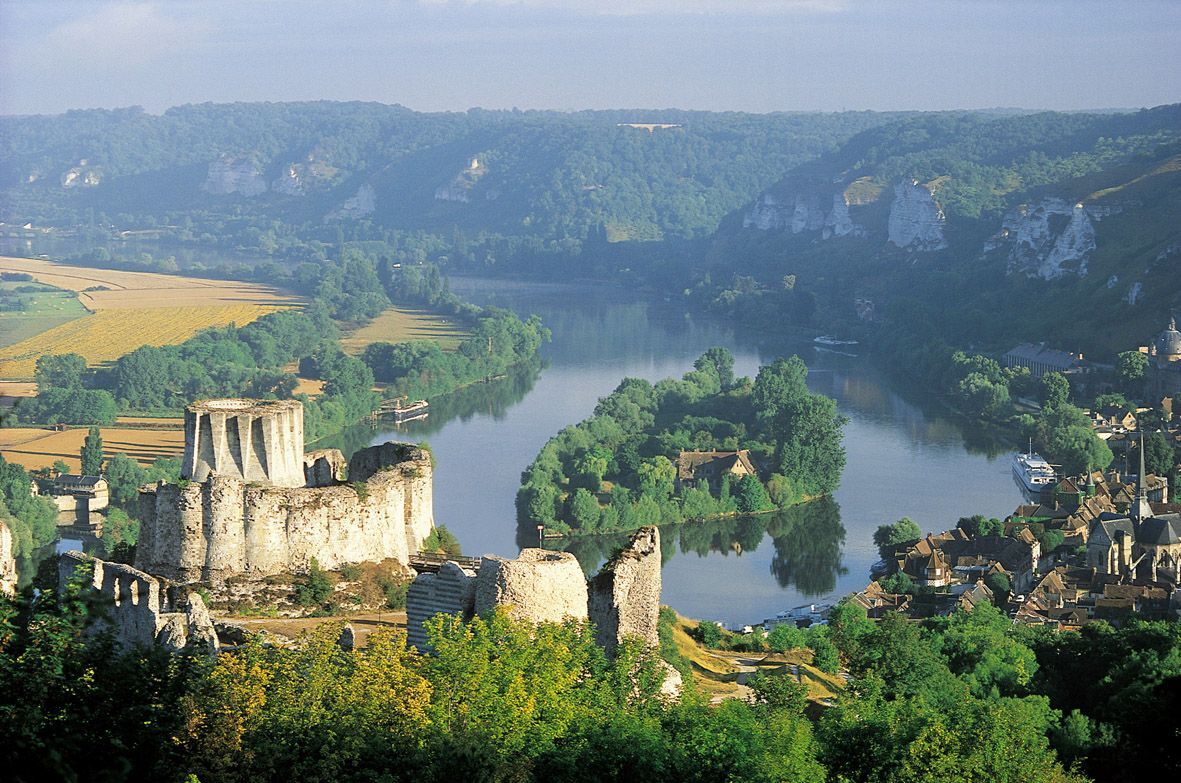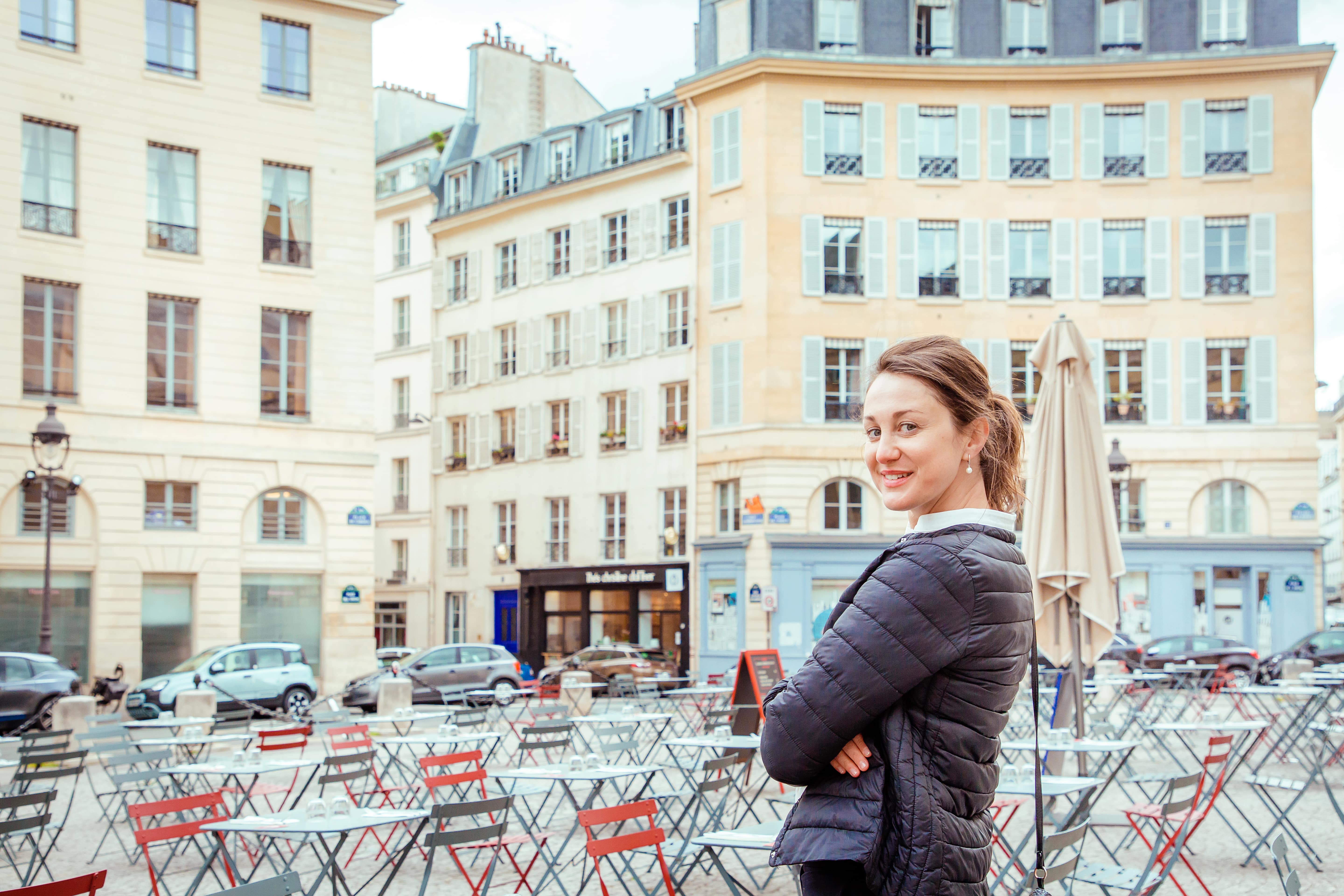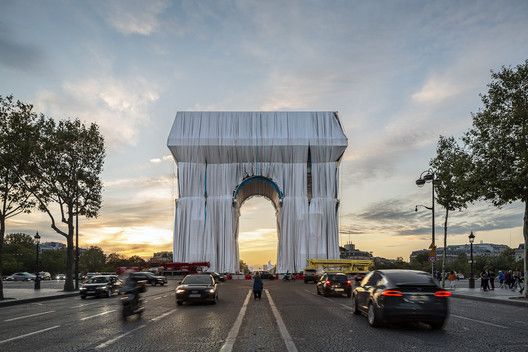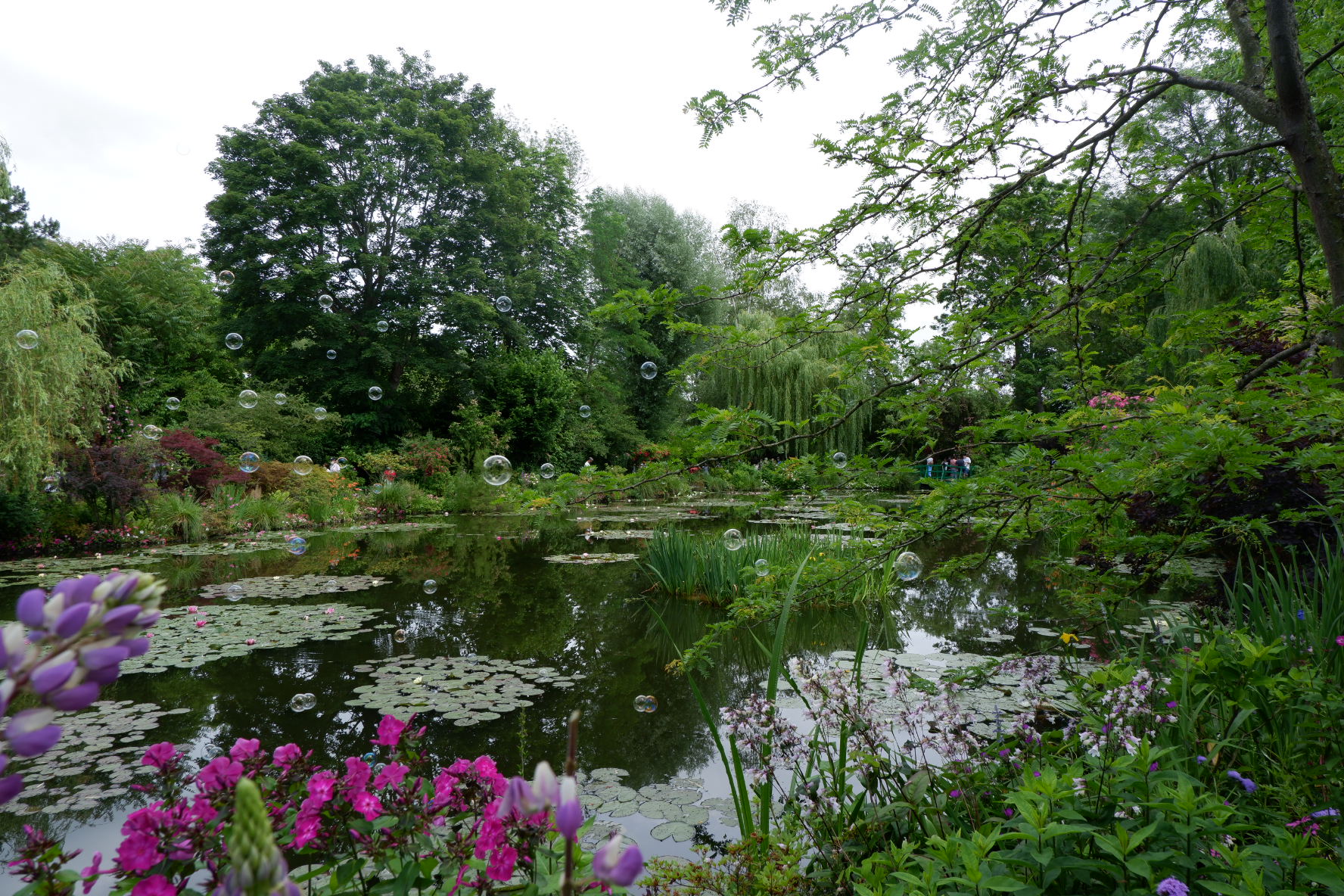L’Art de vivre
à la française
à la française
L’Art de vivre
à la française
The best of one day trip from Paris; Château Gaillard
France is certainly famous for its numerous chateaux. Undoubtedly, this country is a real treasury of the most beautiful medieval and renaissance palaces and castles. Be it the famous Chateaux of the Loire Valley, of Brittany, the ones near Paris, or those in the south of France, their diversity and architectural beauty can’t leave indifferent.
This historical and cultural wealth is the main reason why nearly 90 million tourists (in 2018) yearly cross the borders of this country. As a guide, adventurer, and a simple human being, I adore exploring those unique sites and share the best of the best with you in my blog of ideatourparis after.
Last time we’ve discovered Chartres. This time we’ll go to Normandy region and explore le Château Gaillard in Les Andelys. I was so inspired and impressed by the story of the fortress, that I could not wait any longer to find out more about it. Are you ready to travel in time and space with me?
So, here is what I’ve got.
The appearance
At the end of the 12th century, France is in a war with the English. At that time, the king of England is in the possession of Normandy. His name is Richard Heart of Lion, nick named so for his bravery and military talent. His adult life the king spent in the southwest of France. That’s why, they say, he spoke only in French with his soldiers! It’s a fine mess, I must say for a legendary English king!
In the meanwhile, not less ambitious King of France, Philippe-Auguste, reinforces his troops to rejoin Normandy to the rest of France. It was at that time when Richard I decides to build a solid fortress to keep the toothsome slice of Normand cake to himself.
So, 6000 workers were engaged to build the indestructible building, called later the Château Gaillard. The construction of Château Gaillard only lasted a year.
But the fortress came out impressive, heavy, indestructible and esthetic enough.
The location in Andelys was chosen not by accident. It was placed on a 100-meter cliff, overlooking the valley of the Seine, in the area where the river narrowed and made a loop. In the plans of the English king was to leave only a small area of access to the castle. It was the plateau opposite the river, - a relatively narrow spit of land rising to the fortress that was easy to defend.
3 levels of fortifications
In the opposite to the plateau, an advanced triangular-shaped structure made the first defense. There were towers from which archers could shoot, and a ditch all around 12m deep as an extra obstacle. When the enemy was at the gates of the Bastille, he had a lot to do to pass the 5 meter wide wall. And even if he passed this first line of defense, he would find himself exposed in the castle's farmyard becoming an easy prey for the defenders.
This second level is particularly original from the architectural point of view. Instead of building smooth walls like in the medieval castles of that time, Richard Coeur-de-Lyon projected a scalloped exterior surface. Such an unusual form allowed large projectiles to roll on the structure rather than hitting it head-on.
There was a single door on one side of the enclosure. To reach it the attackers had to walk along a whole part of the wall, giving the defenders time to throw stones and hot oil on them.
The death of Coeur-de-Lyon and the fall of the fortress
Richard I decides to attack the castle of Châlus near Limoges. It was a fatal decision. During the battle, he was hit by an arrow that struck him in the shoulder. He died two weeks later.
His brother takes over the power and the lands. The king John is definitely less fearless than his elder brother. He decides to sign a treaty with Philippe-Auguste that made him the vassal of the King of France for all territories outside England. The cunny King of France knew thus that he would be able to recover the lands of the vassal if the latter didn’t respect the laws. So, it happened, very soon the king John was condemned for ther disobedience to the king and the sentence was applied. The French king will have a strong intention to reconquer the Norman lands. And so, he did.
The French army was strong at that time and the English troops were few. It took only a couple of days to take the advanced positions of Château Gaillard.
The defenders and the inhabitants of the borough took a refuge in the castle, hoping that the fortress was really impregnable and would protect them. They were wrong.
In the meanwhile, the French troops surround the castle
Governor Roger de Lacy was in charge of the castle at that time. He understands that there was enough food to withstand a year of siege, but he cannot keep all of the inhabitants of the village inside. So, they were obliged to leave the fortress. The French soldiers will allow about 1000 people to flee, which did’t please Philippe-Auguste. So, the folowing group of fugitives was immediately slaughtered. The rest was left to sink or swim, stuck between two enemies.
They will eventually die of hunger and cold. To me, it was the most shoking part of the story.
Attack on the Bastion
After 7 months, Philippe-Auguste loses his patience and starts to act. With the help of the constructed covered causeway the French get an access to the first ditch staying almost untouched. Having reached the foot of the first enclosure the soldiers start to use fire to gradually crack the overheated stones. When that part of the wall collapses, the defenders were forced to find a refuge behind the first enclosure.
There were rumors that the French have discovered a small window a few meters high that served as a latrine and wasn’t protected. The other sources say that the French entered through the chapel which was poorly protected, but that the men of the King of France invented the history of the latrines so as not to admit that they had desecrated a holy place. Anyway, the Normans use the fire to stop their enemies, but due to bad luck, the wind pushes the smoke towards themselves. The latter must flee towards the second enclosure.
The second enclosure also falls
The same day, Philippe-Auguste decides to take the second rampart using his catapults. The English soldiers no longer have time to run for shelter in the dungeon. Soon after the interior courtyard was taken, and Roger de Lacy and 129 of his knights eventually surrendered.
Eventually, the King of France Philippe Auguste recovers all the lands controlled by the English, which extended to the south, in the Pyrenees. In 1204, Normandy was again French.
The Château Gaillard will be repaired, then it will see other battles, especially during the Hundred Years War. It will pass on several occasions from the French to the English, and vice versa.
Today, Château Gaillard is a symbol of a bygone era with a special aura surrounding it. Many tourists visit it every year, both for its old stones and for its great flora. Plants brought from Palestine by the Crusaders of Richard Heart of the Lion still grow and become very well acclimatized.
Here is some practical information. The entrance fee to the castle is € 3.50 for adults, € 3 for children, students, big families, over 60s, and people with disabilities. The castle is free for children under 7 years old. You can reserve a guided tour as well, which gives another meaning, and more profound knowledge about the site.
More than 800 years later, Château Gaillard tells us a part of the past, reach in events and tragedies of the common Franco-English History. The medieval castle, even today very tired and aged, gives an impression of the past power, solidity, and invincibility. And the evidence to us, its visitors, that nothing stays impregnable and even fortresses like that can have a relatively short, though remarkable life.
In italiano
Château Gaillard
Indubbiamente, la Francia è un vero tesoro dei più bei palazzi e fortesse medievali e rinascimentali. Che si tratti dei famosi castelli della Valle della Loira, della Bretagna, oppure di quelli vicino a Parigi o del sud della Francia, la loro diversità e bellezza architettonica non possono lasciarci indifferenti. Questa ricchezza storica e culturale è la ragione principale per cui quasi 90 milioni di turisti (nel 2018) attraversano i confini di questo paese ogni anno.
Come guida, l’avventuriero e un semplice essere umano curioso, adoro esplorare quei siti unici e condividerci dopo il meglio del meglio nel mio blog di ideatourparis.
L'ultima volta abbiamo scoperto Chartres. Questa volta andremo nella regione della Normandia per incontrare lo Château Gaillard a Les Andelys.
Sono rimasta ispirata dal suo aspetto e il passato impressionante che non vedevo l'ora di saperne di più. Ed ecco cosa ho scoperto.
Allora, siete pronti a viaggiare atraverso il tempo e le epoche?
La nascita
Alla fine del XII secolo, la Francia è in guerra con gli inglesi. A quel tempo, il re d'Inghilterra è in possesso della Normandia. Il suo nome è Richard Heart of Lion, famoso per il suo coraggio e talento militare. La sua vita adulta Richard l'ha trascorsa nel sud-ovest della Francia. Dicono che a causa di questo abbia parlato solo in francese con i suoi soldati.
Nel frattempo, non meno ambizioso re di Francia Philippo-Augusto rafforza le sue truppe per ricongiungersi la Normandia al resto della Francia. Fu in quel momento che Richard I decide di costruire una solida fortezza per proteggere i suoi possedimenti.
Così, 6000 operai lavorano giorno e notte per costruire qualcosa di veramente indistruttibile. Nello stesso tempo, a pochi chilometri, i francesi costruirono il castello di Gaillon. Quindi, gli inglesi hanno potuto vedere il processo di costruzione. Il fatto che gli irritava molto.
La costruzione del castello Gaillard è durata solo un anno
Ma la fortezza era uscita impressionante; pesante e indistruttibile. L'effetto che il re inglese desiderava di più. La posizione aux Andelys è stata scelta non a caso; su uno strapiombo di 100 metri, nel luogo che dominava la valle della Senna, nella zona in cui il fiume si restringeva formando un anello. Quella collocazione permetteva di lasciare una piccola area di accesso al castello che dovrebbe essere più facile da difendere.
3 livelli di fortificazione
È una cosa veramente impressionante. Di fronte all'altopiano, una struttura avanzata di forma triangolare è la prima difesa. Ci sono torri da cui gli arcieri potevano sparare e un fossato profondo circa 12 metri. Quando il nemico era alle porte della Bastiglia, aveva molto da fare per passare attraverso questo muro largo di 5 metri! Anche se avesse superato questa prima linea di difesa, si sarebbe ritrovato esposto nell'aia del castello, protetta da un secondo recinto di torri.
Questo secondo livello è particolarmente originale dal punto di vista architettonico. Invece di costruire muri lisci come nei castelli medievali dell'epoca, Richard Coeur-de-Lyon voleva un muro esterno fatto smerlato. La forma consentiva ai proiettili di grandi dimensioni per farle rotolare sulla struttura piuttosto che colpirla frontalmente.
C'era un'unica porta su un lato del recinto. Per raggiungerla gli attaccanti dovevano percorrere tutta la lunghezza del muro, dando il tempo ai difensori di lanciare pietre e olio bollente al di sopra.
La morte di Coeur-de-Lyon e la caduta della fortezza
Richard I decide di attaccare il castello di Châlus vicino a Limoges. Per lui quella decisione è stata fatale. Durante la battaglia, ero colpito alla spalla da una freccia. Morì due settimane dopo. Suo fratello prende il potere e le terre. Quest'ultimo decide di firmare un trattato con Philippe-Auguste dopo il quale dobrebbe essere riconosciuto come vassallo del re di Francia, per tutti i territori al di fuori dell'Inghilterra. Il re di Francia sa invece che potrà recuperare le terre del vassallo se quest'ultimo non rispetterà le leggi. Così è successo, il re inglese è stato alla fine condannato per disobbedienza al re francese. La sentenza verrà applicata e Philippe Auguste vorrà riconquistare le terre normanne.
L'esercito del re di Francia era forte a quel tempo e le truppe inglesi erano poche. Un paio di giorni bastarono per prendere le posizioni avanzate di Château Gaillard. I difensori e gli abitanti del borgo si sono rifugiati nel castello, sperando che la fortezza sia davvero inespugnabile e li protegga. Si sbagliavano molto.
Nel frattempo, le truppe francesi circondano il castello.
Il governatore Roger de Lacy era il capo del castello in quei giorni. Capiva bene che c'era abbastanza cibo per resistere solo un anno di assedio, ma senza gli abitanti del villaggio che si sono nascosti all'interno del recinto però. Gli ultimi sono costretti a partire. I soldati francesi permetteranno a circa 1000 persone di fuggire, il fatto che non è piaciuto per niente a Philippe-Auguste. I successivi fuggitivi vengono immediatamente massacrati. Il resto dei survivanti furono abbandonati, blocati tra i due campi. Il loro destino era di morire di fame e di freddo. Per me quella è stata una scoperta la più scocante.
La presa del bastione
Dopo 7 mesi del assalto, Philippe-Auguste perde la pazienza e inizia ad agire. Hanno costruito una coperta per proteggersi e poter accedere al primo fossato. Una volta erano lì, con il fuoco rompevano gradualmente le pietre surriscaldate del muro. Quando esso iniziò a crollare, i difensori si sono rifugiati dietro il primo recinto.
Si dice che i francesi abbiano scoperto una piccola finestra alta pochi metri che serviva da latrina e non era protetta. Le altre fonti dicono che i francesi entrarono dalla cappella che era scarsamente protetta, ma che gli uomini del re di Francia inventarono la storia delle latrine per non ammettere di aver profanato un luogo sacro. Ad ogni modo, i Normanni usano il fuoco per fermare i loro nemici, ma per sfortuna il vento spinge il fumo verso loro stessi. Fuggono allora verso il secondo recinto.
In vano. Anche il secondo recinto cade
Lo stesso giorno, Philippe-Auguste decide di prendere la seconda protezione con le sue catapulte. I soldati inglesi non hanno più il tempo di correre a rifugiarsi. Subito dopo che il cortile interno fu preso, Roger de Lacy e 129 dei suoi cavalieri si arresero. Con questa vittoria, il re di Francia Philippe Auguste recupera tutte le terre controllate dagli inglesi, che si estendevano a sud, nei Pirenei. Nel 1204, la Normandia era di nuovo francese.
Il grande passato oggi presente
Château Gaillard sarà riparato, poi vedrà altre battaglie, soprattutto durante la Guerra dei Cent'anni. Passerà più volte dai francesi agli inglesi, e vice versa, prima che Enrico IV nel XVI secolo decida di distruggerlo parzialmente.
Oggi, lo Château Gaillard è un simbolo di un'epoca passata con un'aura veramente speciale. Molti turisti lo visitano ogni anno, sia per le sue vecchie pietre che per la sua sorprendente flora. Le piante portate dalla Palestina dai crociati di Riccardo Cuore del Leone crescono ancora e si sono acclimatate molto bene.
L'informazione pratica. L'ingresso al castello è di 3,50 € per gli adulti, 3 € per bambini, studenti, famiglie numerose, pensionati, e persone con disabilità. Può anche prenotare la visita con la guida per farci conoscere meglio il sito.
Più di 800 anni dopo, Château Gaillard ci racconta parte della grande storia de Francia e Inghilterra. Quel castello medievale, se anche essendo oggi un po stanco dalla sua età, dà sempre un'impressione di potenza, solidità e invincibilità. È anche la prova per noi, i suoi visitatori, che nulla rimane indistruttibile dal punto di vista materiale, e anche fortezze come questa possono avere una vita relativamente breve, anche se straordinaria.
Un altra idea eccellente sarebbe di organizzare un pic nic dopo o durante la visita. La panorama dalla una delle coline che circondano il luogo sicuramente migliorerà il vostro appetito e l’imaginazione! Buona avventura!







